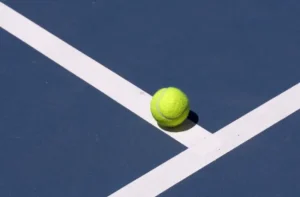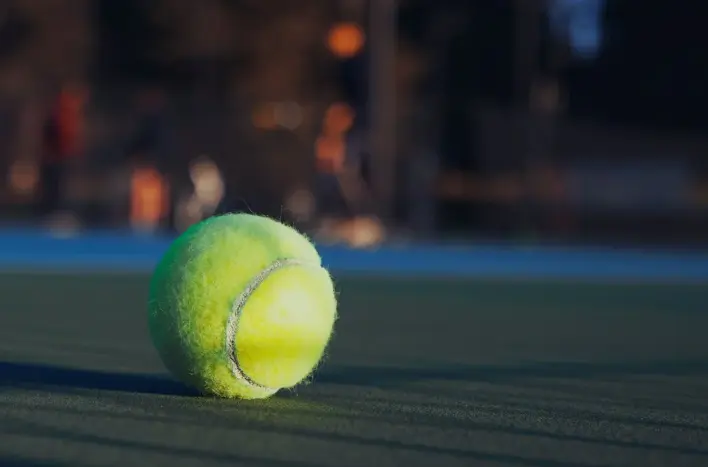A ping pong or table tennis is a fast running, fighting sport that requires precision, skill and the right equipment. While paddles and tables are often in the limelight, the ping pong ball, also known as one of the table tennis balls, is just as important for a game.
The speed, rotation, and rebounding of the game all can be affected by the right ball. The article will guide you on how to choose table tennis balls from the brands to the sizes and provide you with performance tips to help you select the ideal ball for your game.
Importance of Quality Ping-Pong Balls

As far as the quality of the ping pong ball is concerned, the discussion should not commence with the best labels and the choice of players. The quality of the tennis ball, in general, determines the start of the game and the opponent’s control.
Which is due to its ability to produce a consistent bounce. Bad balls usually can be easily broken, their rounds can be lost or even their bounces can be unpredictable, which will lead to frustration and inconsistent play.
Key Factors to Consider When Choosing Ping-Pong Balls
That’s the way to go when it comes to harmony, drawing, and making a decision of the IRR weight. They’re the size, quality, and the material it is made of.
Size and Weight
Ware in a standard size of 40 mm in diameter, 2.7 grams is the weight of a table tennis ball. Afterward at the 2000 Olympics, International Table Tennis Federations (ITTF) changed the size from 38 mm to 40 mm to improve the game watchability.
Older Nittaku 3-Star 40 mm was a high-performance ball. It was faster than most other balls because of the extra air inside.
Besides, it produced a hearer-sounding if coming from the racket or table, so it was easy to hear it getting in touch with the item.
Star Rating
The star rating system is a good method for the players to mark out training balls or match-grade balls. Table tennis opponents are mostly rated from 1-star to 3-star:
- Balls of 1 star: They are commonly used for casual play or training sessions. They are not very much expensive, but their longevity may not be one of the features, and this may not be perfectly round for competitive gaming.
- 2-Star Balls: Although these balls are generally regarded as seconds, their quality can still vary depending on the company. They are often used for practice and small matches by certain brands.
For the most part, they are suitable for training purposes or lower-level competitions.
- 3-Star Balls: Makers use the finest and most effective materials to produce balls with top-quality consistency, bounce, rotundity, and firmness. These balls are commonly used in high-level competitive games and tournaments.
When you buy balls, you will most likely buy a 3-star ball that ensures the highest quality and, thus, the longest life.
Material
Initially, manufacturers primarily made ping pong balls from celluloid. However, due to safety concerns and durability, the industry has quickly shifted to using synthetic plastic. Despite this, some companies still produce celluloid balls.
Among all the plastic-made R & D samples we brought to the conference, samples made of poly balls were easier to store and had higher grounds of not being flammable.
Thus, from one point of views, poly balls and celluloid of any kind are very much comparable, aside from the minor differences.
In truth, it is the biggest brands that we are talking about. The exciting news is that the plastic balls are the most playable of all kinds of balls by professionals due to range and longevity.
They have taken over from other kinds of balls that were in the market.
Top Brands for Table Tennis Ping-Pong Balls
1. Butterfly
It’s a brand, has earned a reputation in the world of table tennis for producing many kinds of high-quality equipment.
Butterfly style table tennis balls are of top-grade roundness, and they bounce consistently. ITTF has allowed the Dragon A40+ 3-Star Ball, which is one of the most used balls.
2. Nittaku
Nittaku balls hold an incredibly high ranking in the world of the table tennis sports, where professional players are all about them, and as a matter of fact, their most famous that is Nittaku Premium 40+.
Being the ball maker, Japan makes the top most of its balls.
With the exceptional durability Nittaku balls have, players always get the same classical performance, awesome bounce, and spin.
They are a top pick in international competitions and the most rated ping pong balls worldwide.
3. DHS (Double Happiness)
The DHS company has been supplying some of the most efficient 3-star balls at a reduced amount of money.
ITTF events use DHS balls as the official choice, and they are popular for their superb spin and stability, both crucial for matches.
One of the 3-Star Balls, the DHS D40+ 3-Star Ball, has been enjoying the most significant attention in the competitions.
Stiga
Many consider Stiga one of the top brands in table tennis equipment for adults, and their 3-star balls offer an impeccable choice for both amateur and competitive players.
The Stiga 3-Star Function is a powerful ball that bounces evenly and is repeatable, thus it would be a great investment option for those in search of a good performance to price balance.
Joola
Many around the world tournaments use Joola balls, such as the JOOLA Advanced 3-Star,
which are known for their excellent performance and dependability and are ITTF-approved. JOOLA’s 3-star balls offer exceptional durability and control, making them ideal for serious players.
Performance Tips for Table Tennis Balls
Selecting the right ping pong ball can greatly affect your game, but it’s equally important to consider how to use and care for the balls for maximum performance.
Ball Handling
Avoid holding or pressing down too hard on the balls, as this can enable them to lose their shape and result in irregular bounces. Always store ping pong balls in a cool, dry place to minimize damage, especially in humid climatic conditions.

Practice with Different Ball Types
Whether you’re practicing or playing competitively, try using different types of balls to improve your adaptability.
This will help you adjust to various ball bounces and speeds during different matches, giving you an edge when transitioning between casual and competitive play.
Use the Right Ball for the Right Situation
If you need to drop a ping pong ball and do some playing or exercising, 1-star g 2-star balls will be certainly enough. They’re cheaper, so you don’t have to think about constantly replacing them.
However, for official and also for strict training, always purchase the 3-star balls to have optimal performance and consistency.
Conclusion
Selecting the appropriate table tennis balls is a very important step to improving your atrium game. When selecting the best ping pong ball for your situation, consider a number of variables such as the maker’s star rating, material, and brand. For beginners, he focuses on 1-star or 2-star balls, personally managing the system under clear conditions. As a result, the model’s constraints are well-defined and follow consistent patterns.
In life, it is essential for the adolescents to experience periods free from constraints and unnecessary structure, which in turn allow them to employ. Their thinking and imagination as well as opportunity for the unpredictable to occur are presented to them.The other major issue that can impeach this success is the fact that adolescent participation in leisure time activities and social setting that is generally safe an
In the final result, the best ball is bound to be the one that perfectly match with your sporting style, as well as be strong enough to guarantee constant spin, speed, and long-term durability. With the right ping pong ball in hand, you will for sure have a more productive and competitive table tennis playing experience.
This is the place where you want to find out everything about us, then go here:
Difference Table of the Article
| Topic | Details |
|---|---|
| Importance of Quality Ping-Pong Balls | Quality affects the game’s performance; a consistent bounce is essential. Low-quality balls can break easily or cause unpredictable bounces, leading to frustration. |
| Key Factors to Consider | Size, weight, and material are the main factors to consider when selecting a ping pong ball. |
| Size and Weight | Standard ping pong balls are 40mm in diameter and weigh 2.7 grams. The size changed from 38mm to 40mm after the 2000 Olympics for better visibility. |
| Star Rating | 1-Star: Used for casual play or training. 2-Star: Used for practice or lower-level competitions. 3-Star: Best for high-level competitive play, offering consistency and durability. |
| Material | Ping pong balls were originally made from celluloid, but now most are made of plastic (poly balls) for better durability and safety. |
| Top Brands for Ping Pong Balls | Butterfly: Known for high-quality 3-star balls. Nittaku: Offers premium 40+ balls used in international competitions. DHS: Known for affordable yet high-quality 3-star balls. Stiga: Known for good performance and price balance. Joola: Provides durable and reliable balls used in global tournaments. |
| Performance Tips for Table Tennis Balls | |
| Ball Handling | Avoid pressing too hard on the ball to preserve its shape. Store balls in a cool, dry place to prevent damage. |
| Practice with Different Ball Types | Experiment with different ball types to improve adaptability to various bounces and speeds. |
| Use the Right Ball for the Right Situation | 1-Star or 2-Star balls are fine for casual play or practice. For serious training and official matches, use 3-Star balls for optimal performance. |
| Conclusion | Selecting the right ball depends on factors like star rating, material, and brand. Beginners should start with 1-Star or 2-Star balls, while experienced players should opt for 3-Star balls for best performance. |




